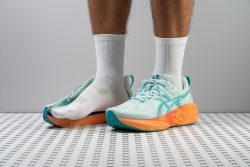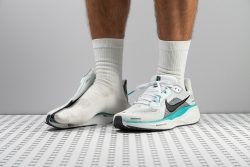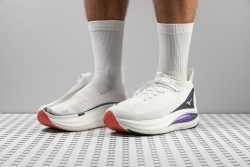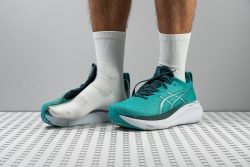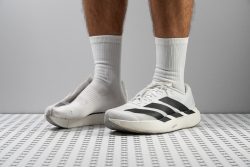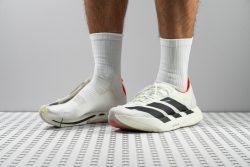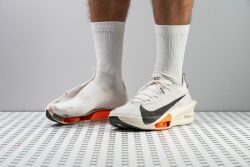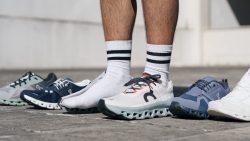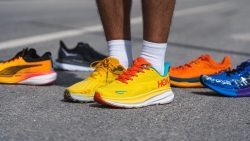7 Best Neutral Running Shoes in 2025
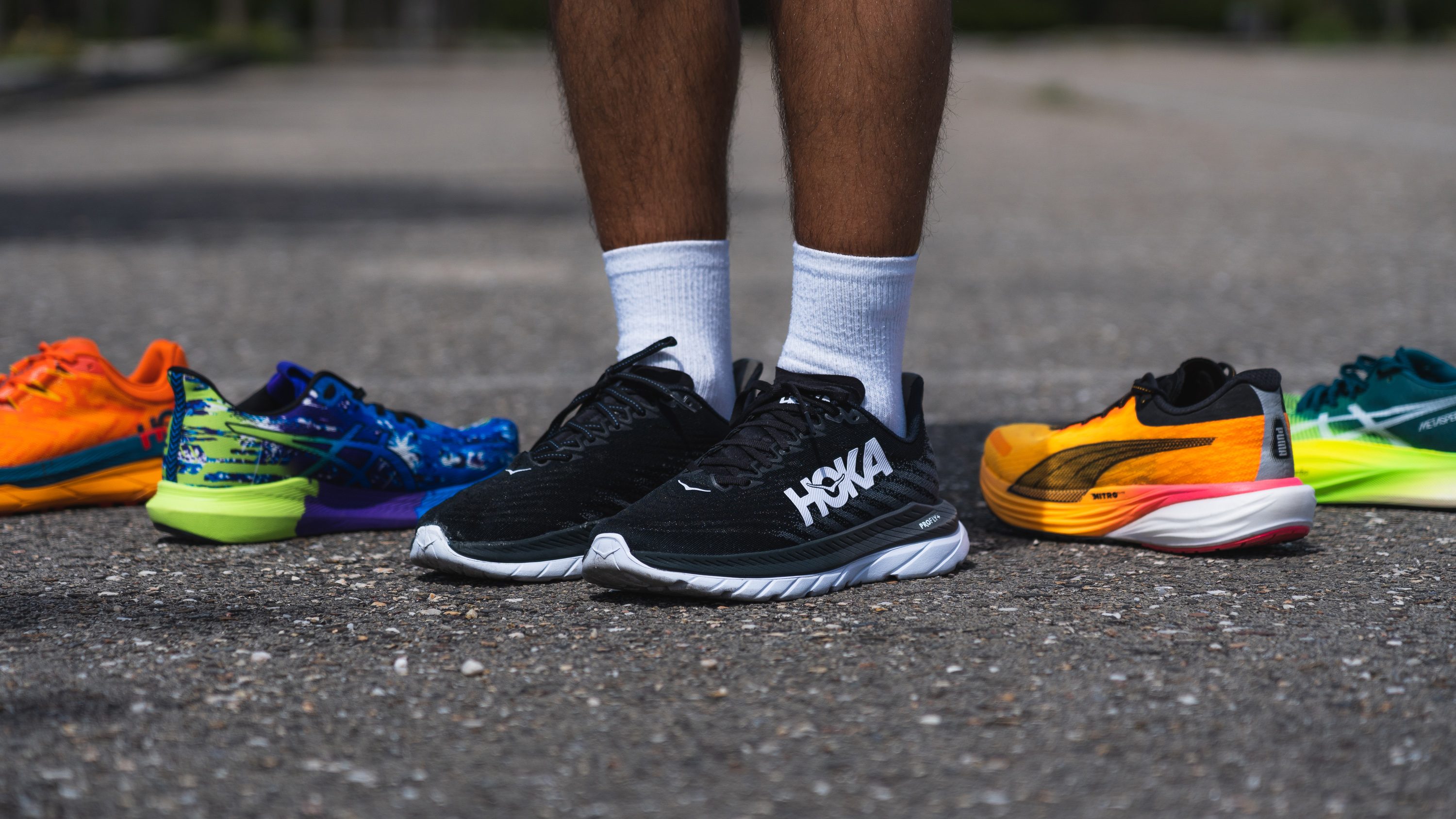
We buy shoes ourselves. We earn commissions when you buy through us, at no extra cost. Why trust us
Neutral running shoes are intended for people with neutral pronation when the foot is not rolling inwards excessively. These shoes have no additional stabilisers or foot-guiding technologies. In this guide, we talk about how to recognise neutral shoes, what they are known for, and when you should (not) choose them as your go-to running shoes.
With around 85% of the running shoe market devoted to neutral shoes, there are more than plenty of options. We have personally tested neutral running shoes to select the best of the crop.
Be it a go-to daily trainer that you’re after, a race-day shoe, or a rugged trail option, we’ve got our top picks in different categories.
Disclaimer: The purpose of this article is to educate, not to make any medical diagnosis or recommendation.
How we test neutral running shoes
We are a team of running shoe fanatics equipped with a shoe-testing lab and a set of strict criteria:
- Every shoe gets cut into pieces and we get to publish more than 20 data points for each shoe, from energy return to shock absorption to upper breathability to outsole hardness and durability.
- We log miles to test each pair in a variety of conditions. We also do recovery runs, fartlek, and race paces in these shoes to perfectly understand which pace they excel at.
- We do not receive shoes for free, all products are purchased with our own money to keep us unbiased.
The top picks make it to this list.
Best neutral running shoes overall
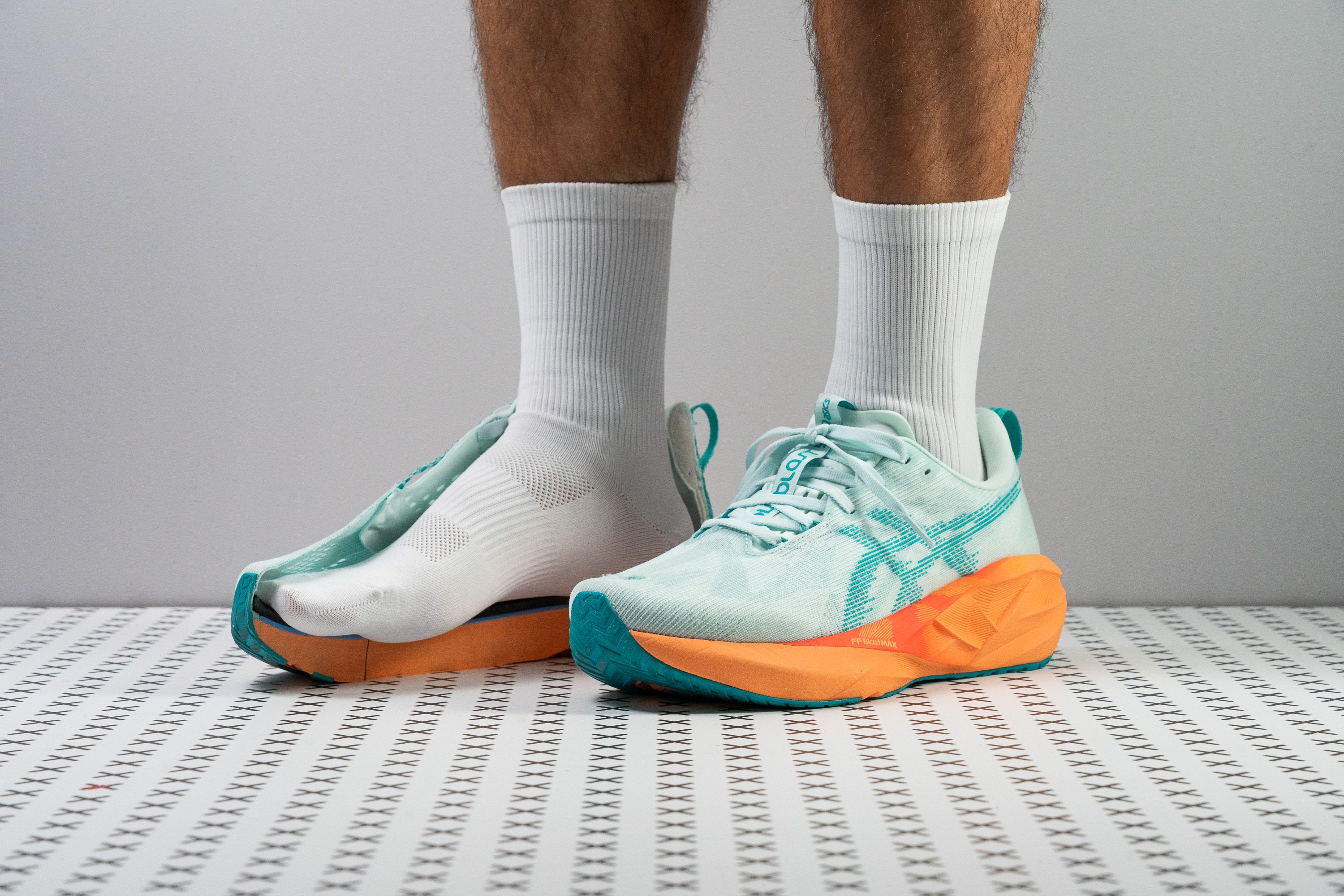























































What makes it the best?
The ASICS Novablast 5 reveals itself as the ultimate neutral running shoe in our lab and run tests. This decadent marvel exhibits a stable and energetic ride across different run workouts and exudes pure comfort beyond our imagination.
Running with the Novablast 5 feels like we can run endlessly without leg strain. The midsole has top-tier cushioning, combining a massive 40.9/33.5 mm stack with buttery goodness. While this feels ultra-soft underfoot, there’s still a lot of spring for faster efforts. Our durometer reveals that it’s 38.4% softer than the average road running shoe.
Surprisingly, our runs feel stable despite landing on the chunky platform. Novablast 5 provides extra width in the midsole to enhance our surefootedness with every stride. Our calliper confirms it’s wider than average at 122.3/97.6 mm.
Another unexpected feature of Novablast 5 is its lightness on foot. At 9.0 oz (254g), it's lighter than the 9.4 oz (266g) average. Adding to the airy feeling is the unresisting midsole that flows naturally with our motions. Our bend test confirms it’s 32.2% more flexible than average.
While Novablast 5 is a great all-rounder that can go fast, it still lacks the pop needed for racing. Those aiming for new PBs might want to explore pure racers.
Pros
- Improved energy return with FF Blast MAX foam
- Plushiest foam in a Novablast yet
- Keeps the same price as v4
- Higher stack height for extra cushioning
- Enhanced flexibility
- Lighter than its predecessor
- Best Novablast ever for wide feet
- Exceptional weight-to-cushion balance
- Works for short, medium and long runs
Cons
- Breathability could be improved
- Toebox durability
- Toebox durability
Best daily training neutral running shoes
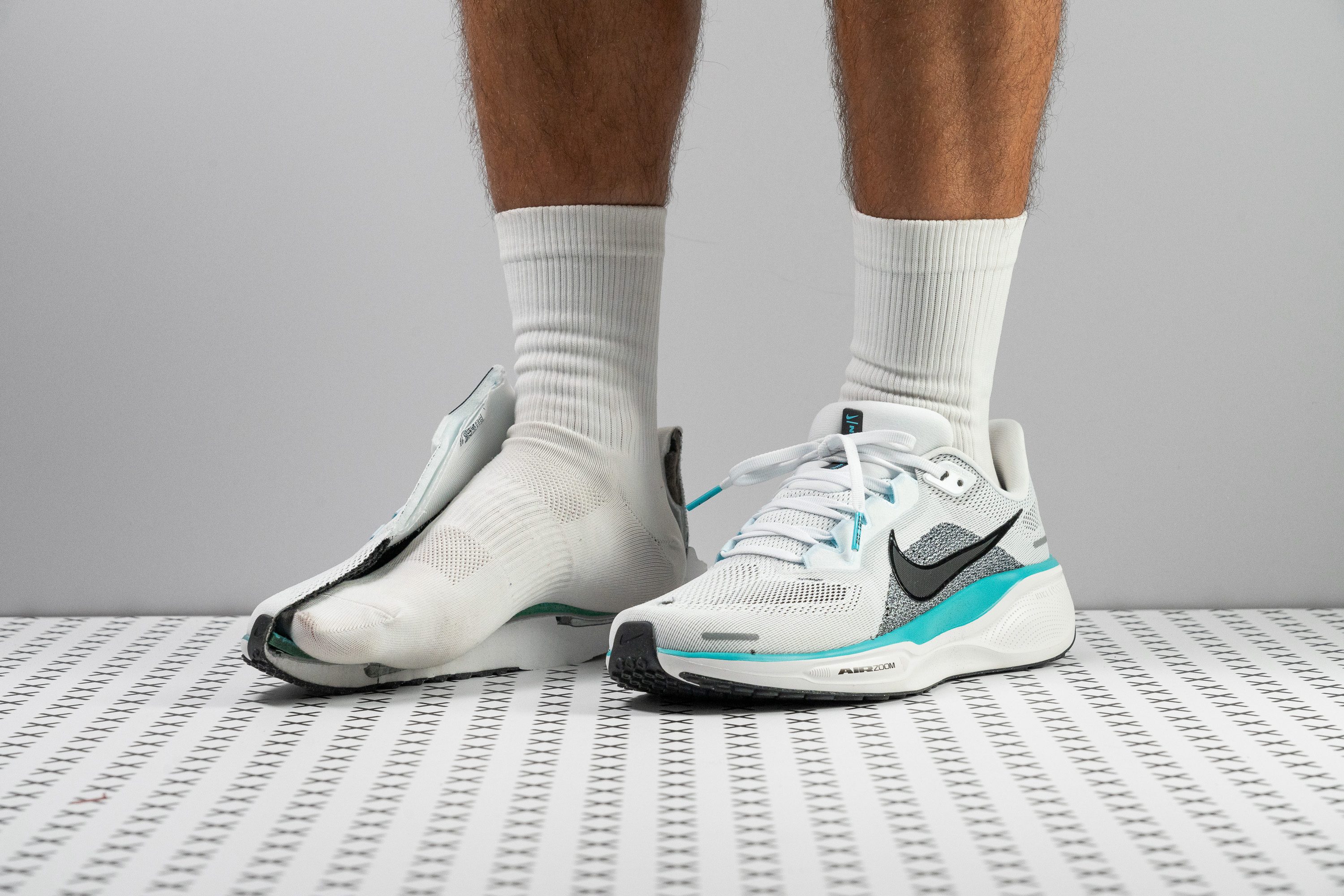




























































What makes it the best?
The Nike Pegasus, now on its 41st edition, continues to be an iconic workhorse. It’s a reliable, durable, and comfortable shoe for burning daily mileage. With 40 years of iterations behind it, the Pegasus 41 stands as our undisputed front-runner for the best neutral daily trainer.
Having a good amount of rubber coverage and the classic waffle pattern, this shoe can handle several training blocks and even the occasional off-road adventure. Our durometer confirms this with a high reading of 89.0 HC, meaning it’s made of tougher rubber.
The 41st Peg has the upgraded ReactX foam and retains the Air Zoom technology for some responsiveness. The moderate stack height keeps the ride balanced, while the lighter foam boosts comfort for prolonged wear. As our durometer confirms, the cushion is 26.2% softer than average.
This version is Pegasus’ most rockered version yet but still retains the flexibility and versatility it’s loved for. Our bend test reveals it’s 34.0% more adaptive than average, which means it retains the natural running experience. It’s also comfortable enough for activities beyond running!
However, the drop feels quite harsh. At 11.4 mm, it’s more suited for runners who heel strikes or have lower leg issues.
Pros
- Enhanced for heel strikers
- New ReactX foam!
- Improved breathability
- Plush upper
- Good durability
- Several stability enhancements
- Newly designed rocker and bevel
- Solid performance
- Superior lockdown
- Sustainable features
Cons
- Price increased by $10
- Worse than the v40 in cold temperatures
- Poor grip
- Poor grip
Neutral running shoes with the best shock absorption
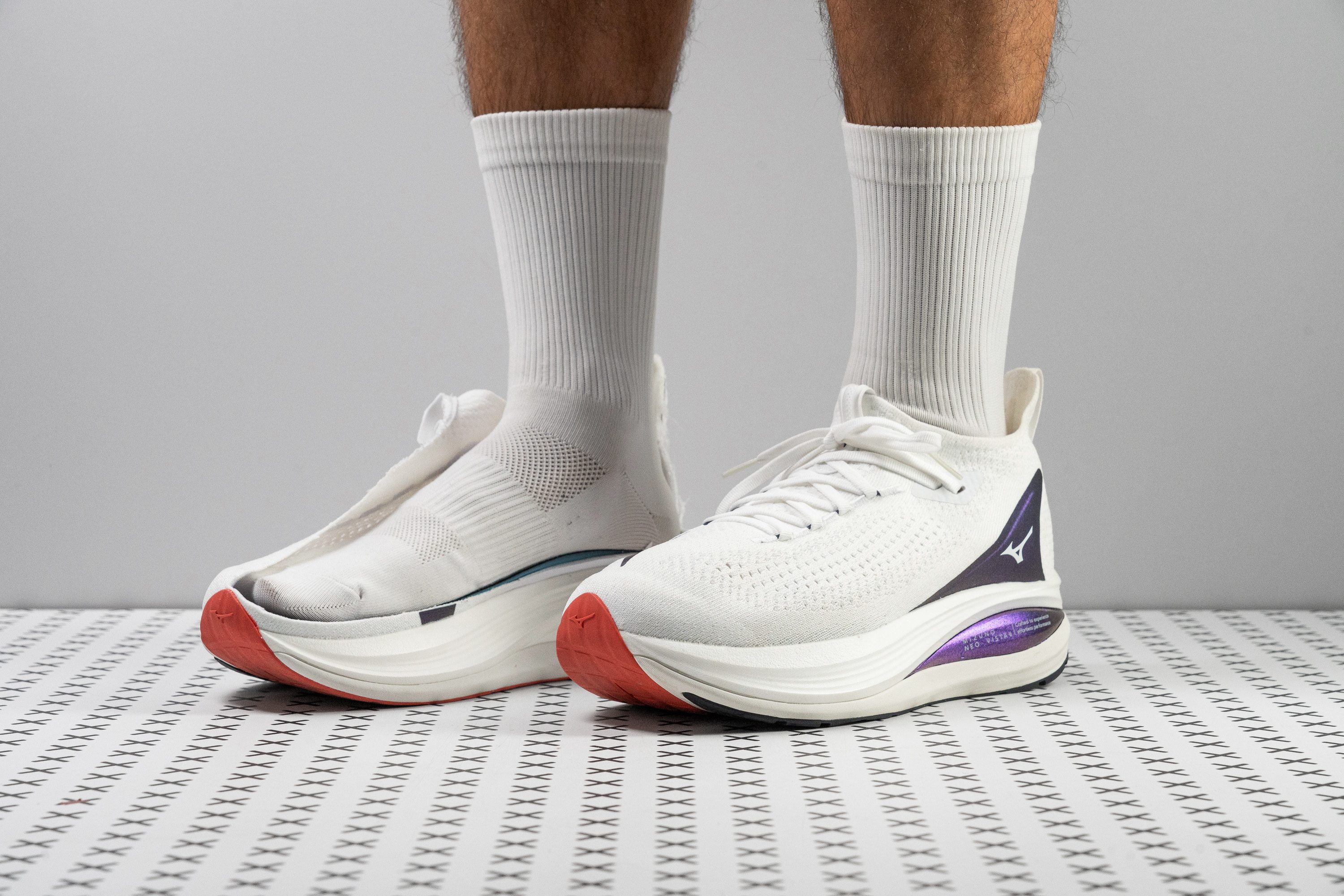
















































What makes it the best?
The Mizuno Neo Vista 2 sets a new standard for all-around comfort, establishing itself as a standout choice among neutral running shoes we ran with. It broke records in the lab, from its superior height to its impact-protective cushion, earning the well-deserved title for best shock absorption.
This maximalist delivers pure bliss with every step. Our calliper proves its mind-blowing stack height at 46.0/37.5 mm, boldly exceeding the 34.4/25.7 mm average. We’ll never run out of comfort no matter how long we run, because the forefoot alone stands taller than the average heel stack in our lab.
We also have a specific test to measure shock absorption, and Neo Vista 2 cemented its status as the best leg-saver with top scores of 170 SA and 137 SA in the heel and forefoot. No other shoe comes close to its ability to reduce the harshness of landings.
Moreover, comfort extends to the breathable upper, which offers relief even during extensive runs because it avoids blisters and hotspots. Our lab tests prove this with a high 4/5 rating, ensuring comfort across seasons.
However, the trade-off for such indulgent comfort is support. Because it’s so soft, we can’t recommend this pair to those seeking subtle guidance and to those who run on twisty routes.
Pros
- Massive stack height
- Super-plush Enerzy NXT foam
- Perfect for long runs
- Lightweight for its huge size
- Good durability
- Breathable knit upper
- Roomy toebox height
- Insanely fun!
Cons
- Not enough energy return
- Price hike feels unjustified
- Not stable for heel strikers
Neutral running shoes with the best traction
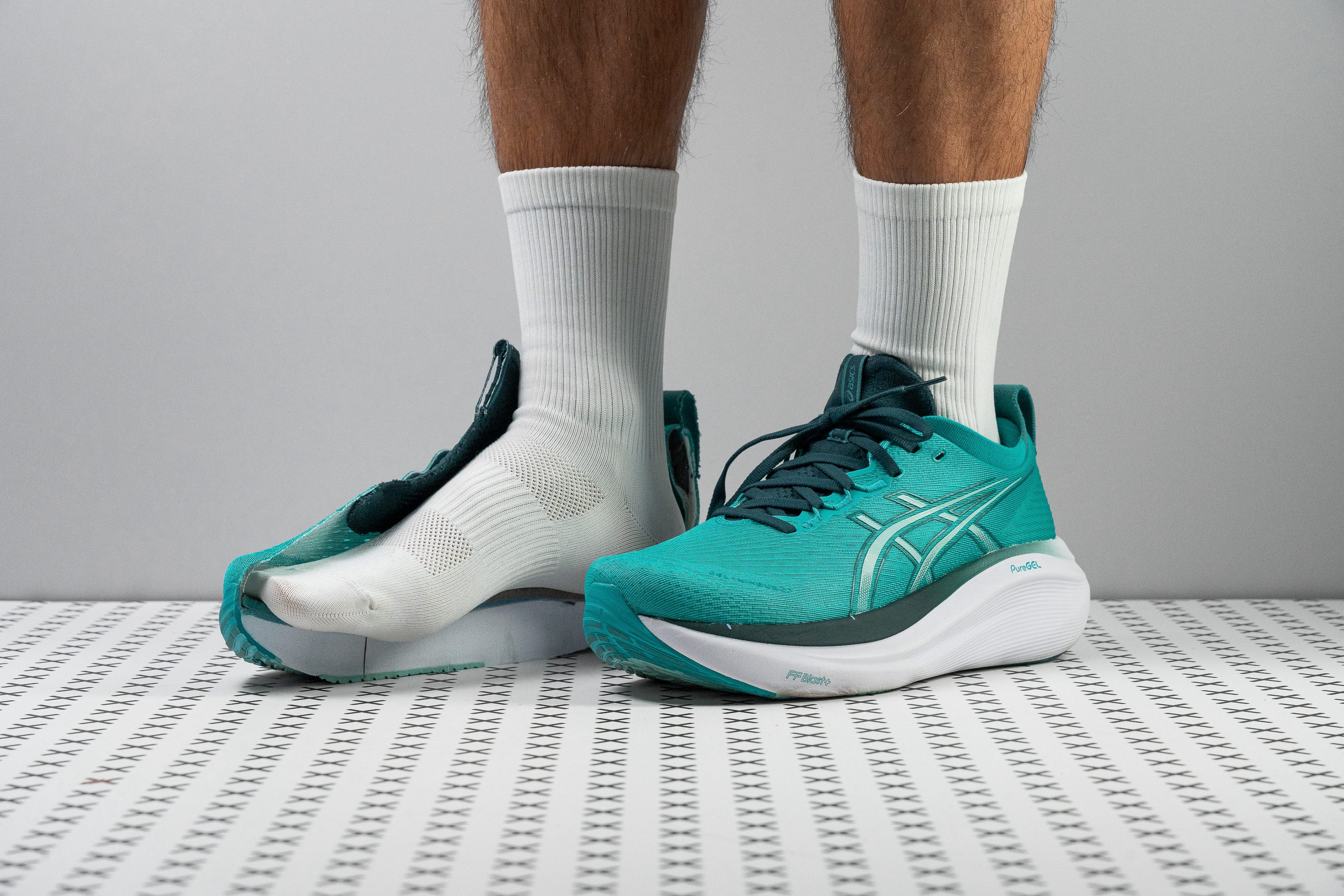


















































What makes it the best?
With a plush and breezy upper above, and leg-saving cushioning below, the ASICS Gel Nimbus 27 offers a fresh and strain-reducing experience in our runs. Its Hybrid ASICSGRIP outsole offers exceptional control, and its performance in the lab proves it offers the best traction among neutral running shoes.
Speaking of grip, we measured the rubber with a high friction score of 0.84. At this rate, it can handle even the most slippery roads because its bite is 82.6% stronger than average.
Underfoot, a heavenly cushion took care of each landing. With a massive stack of 42.7/34.4 mm, we had no feel of the ground. Moreover, it effectively reduces the forces of road running by reducing shock by 6.3% better than average in the heel and an even greater 30.8% in the forefoot. Indeed, double-digit miles feel almost therapeutic.
The jacquard mesh upper exudes a premium feel, embracing our feet with generous padding. Despite its plushness, hotspots and blisters are nonexistent, courtesy of the shoe's excellent ventilation. Our breathability assessments award it a 4/5 rating, ensuring comfort across all seasons.
Surprisingly, the Gel Nimbus 27 is a supportive shoe that brings confidence. With a substantial base measuring 119.5/99.8, there was no room for unsteady landings. Unfortunately, its generous dimensions lead to a heavier build. Those seeking an agile trainer should go for a lighter shoe.
Pros
- Even more foam underfoot!
- Premium-feel, breathable upper
- Fantastic stability
- Improved toebox with extra wiggle room
- Flexible knit tongue
- True maximalist comfort for recovery runs
- Amazing heel lockdown
- Top-tier grip
- Top-tier grip
Cons
- Feels bulky and heavy
- Minor price increase
- Lacks energy return
- Minimal outsole coverage
Best neutral running shoes for tempo workouts
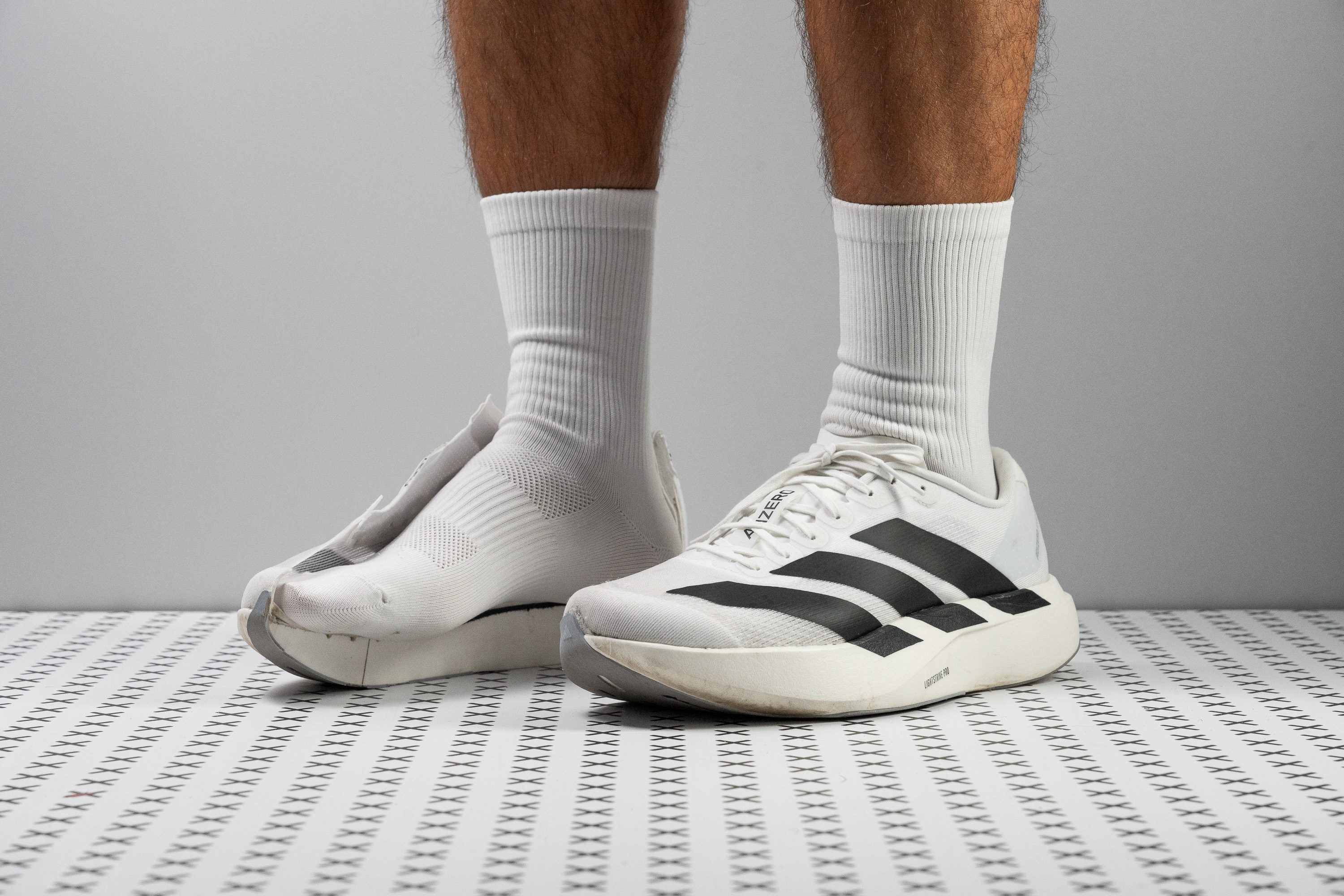


































































What makes it the best?
With energy flowing through its veins, Adidas Adizero EVO SL is our super tempo trainer among neutral running shoes in the lab. It feels extremely light all around as it offers a fluid and forgiving ride that performs superbly at any distance and pace.
The Lightstrike Pro midsole tempted us to gobble more miles as it spoiled us with bounce and comfort through its 36.1/28.1 mm stack. Its above-average responsiveness gives us the runner’s high we’re craving, with energy return scores of 74.3% in the heel and 70.3% in the forefoot.
EVO SL is weightless and peppy. At 7.9 oz (223g), it’s 12.9% lighter than average. Despite its energy rebound, each stride feels effortless since the midsole doesn’t resist our movements. In our bend test, it emerged 34.7% more flexible than average, even more bendable than other daily trainers in our roster!
EVO SL is a good place to be in all day. No sweat and blisters with its ultra-breezy upper. The constant airflow provided by the ventilation holes keeps our feet fresh, which our breathability tests confirm with a remarkable 5/5 rating.
Unfortunately, its maximum airflow comes at the expense of toebox durability. Our Dremel ruined it in seconds, so we can’t recommend this pair to runners who tend to poke their toes through the uppers.
Pros
- 100% Lightstrike Pro superfoam
- Exceptional value-to-performance ratio
- Low weight
- Ultra-breathable upper
- Unmatched versatility
- Agile and fun ride
- Handles short and long runs with ease
- Striking Evo 1-inspired aesthetics
- Striking Evo 1-inspired aesthetics
Cons
- Poor-quality laces
- Short, non-gusseted tongue
- Toebox durability
Neutral running shoes with the best energy return
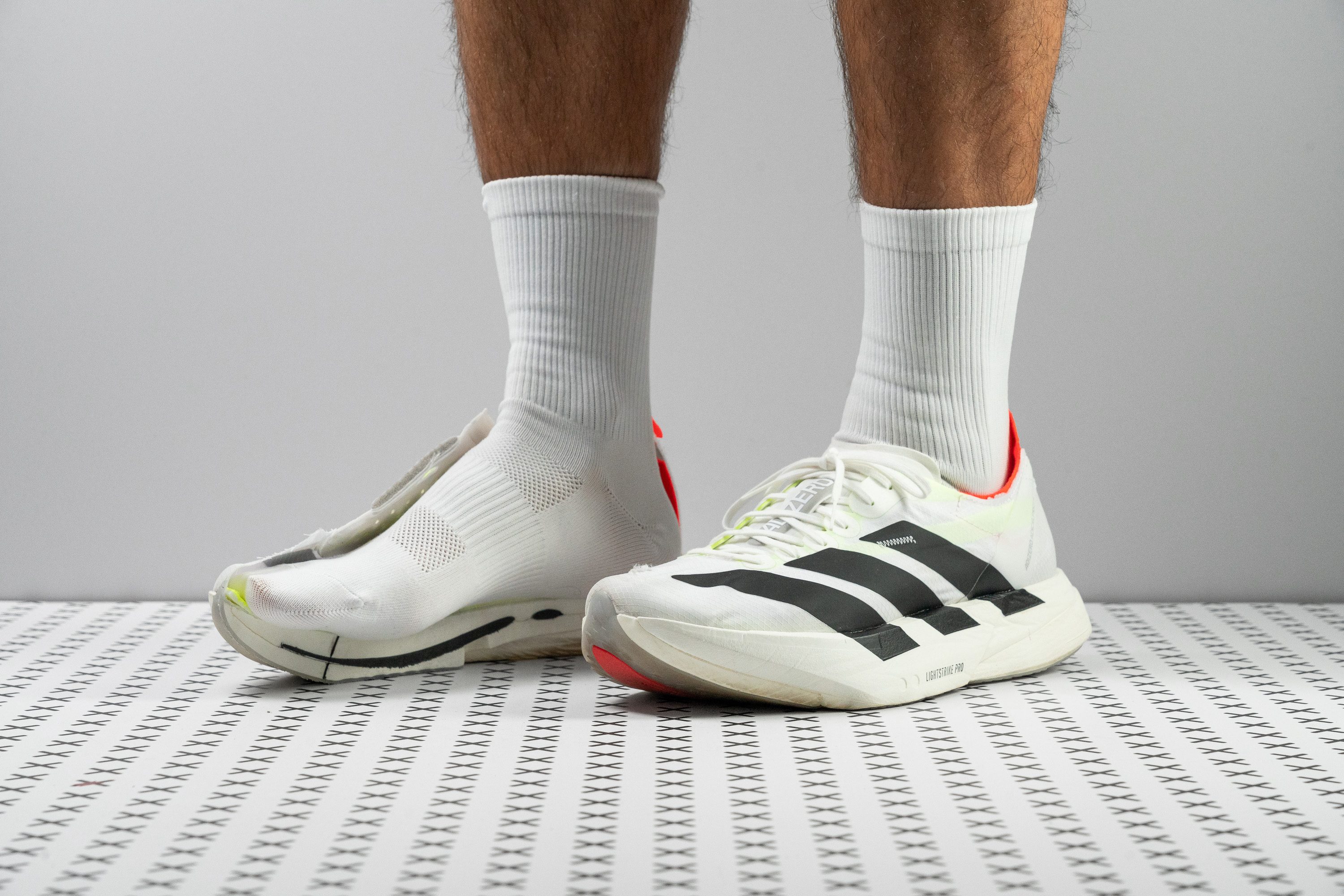





























































What makes it the best?
Light and speedy without losing confidence over our strides, the Adidas Adizero Adios Pro 4 offers pure magic and the best energy return among neutral running shoes we tested. Our lab results couldn’t deny its high performance!
Running in the AP4 feels more natural at top speed. The Lightstrike Pro foam offers a dynamic ride, and we went to the lab to test further. In our energy return assessment, the heel recorded 80.4% and the forefoot 80.3%, which are both significantly higher than their respective averages of 58.3% and 60.5%.
Exceeding the standard racer, AP4 has a wider-than-average landing base in the forefoot—an additional 4.5 mm, promoting stable landings for forefoot and midfoot strikers. Even when cornering at high speeds, we remain steady and in control with the help of the super-adhesive Continental rubber patch underneath our forefoot.
The LIGHTTRAXION offers solid grip for wet or dry roads, with a high 0.55 score in our traction test. Not only that, it displays exceptional durability when it showed minimal damage in our Dremel test. Because of its strong wear resistance, it manages to be 1.0 mm thin, leading to the shoe’s overall low 7.0 oz (200g) build.
However, the streamlined toebox may cause discomfort to those with wide or swollen feet. Those who need a more accommodating fit should try alternatives.
Pros
- Softer, bouncier Lightstrike Pro foam
- Maintains the same price
- No more heel slippage
- Versatile from 5K to marathon distances
- Durable outsole with outstanding grip
- Fantastic for midfoot and forefoot strikers
- Improved for faster runners
- Comfortable, gusseted tongue
- Lighter than Adios Pro 3
Cons
- Unstable for every heel striker
- Narrow, tapered toebox
- Upper lacks breathability
- Midsole loses bounce quicker than AP3
Best neutral race running shoes














































































What makes it the best?
The Alphafly 3 is a lightweight marvel of running engineering, boasting exceptional energy return, luxurious comfort, and remarkable stability. After intense testing in the lab and on the streets, it emerges as our top racer among neutral running shoes.
This shoe is meant to race as it truly comes alive at a faster pace. It integrates the rigid FlyPlate and Air Pods into the midsole to provide consistent power and responsiveness. Our bend test revealed its exceptional 144.7% higher stiffness than average, exhaling limitless energy with every stride. What sets the Alphafly 3 apart is its dynamic ZoomX midsole, featuring a dual-density setup for enhanced stability and impact protection. The top layer is a firm 29.3 HA for surefootedness, while the bottom is a plush 18.1 HA for added comfort. This is important for preventing fatigue, especially in the later stages of a race.
Even if it falls in the max-cushioned range, the Alphafly 3 surprises us with its lightness at 7.1 oz (201g). It delivers a refreshing ride with its well-ventilated Atomknit upper, scoring a perfect 5/5 on our breathability test.
However, enjoying this shoe’s high performance comes with a hefty £280 price tag. Those on a budget should explore other options.
Pros
- Remarkably lightweight despite its broad size
- Best-in-class breathability
- Excels in the marathon distance
- Repositioned Air Pods offer a better ride than the v2
- ZoomX foam delivers massive energy return
- Aids in forward momentum, especially when legs begin to fatigue
- Better than ever for 5K/10K racing
- Finally smooth transitions!
Cons
- Heel strikers might wear down the outsole quickly
- The arch could still be a challenge for some
- The sock-like tongue might not suit everyone
You’re in luck if you really need neutral running shoes! That means your ankles aren't excessively rolling inwards (overpronation) or outwards (supination), and your pronation is neutral. If you’re not sure about this, skip to this chapter immediately.
Why it’s GREAT to run in neutral running shoes
Maybe you didn’t need this encouragement, but here it is anyway:
- You have plenty of shoes to choose from, given that 85% of running shoes on the market are neutral.
- You won’t have to pay extra for stability features and technologies that you don’t need.
- You won’t need to carry extra weight because stability features often make shoes heavier and you don’t need them.
- Neutral shoes are found across the board (as daily trainers, tempo shoes, and race shoes). Unlike stability shoes which are focused on daily trainers.
- Given the changing terrain and surfaces, almost all trail shoes are considered neutral. They can simply be more or less stable, but they very rarely feature stability technologies per se.
- Running in neutral shoes means that you most likely have neutral pronation. This also means that you’re most likely wearing the shoes evenly at the bottom. Such wear pattern makes the shoe last longer. Other runners who land heavily on one side (inner or outer) can wear the shoes faster because the impact forces are heavily focused on one side of the shoe and not evenly dissipated.
How to recognise neutral running shoes
There are 2 main categories of running shoes: neutral and stability. The main difference between neutral and stability shoes is that the neutral ones don’t have trademarked stability technologies. The two groups can have many similarities.

This is a very general rule:
- Neutral shoes can be very soft and flexible, unlike stability shoes. If you bend and twist them, you should feel how flexible they are (torsionally and longitudinally)
- Neutral shoes can have sock-like uppers, which also means very soft and not padded heel. Stability shoes often feature a stiff heel counter at the back
- Neutral running shoes can feature very narrow and tall platforms, while stability shoes most often have wide midsoles.
It’s important to know that, given how big of a market for neutral running shoe is, the variations can be wild. So, even though, in general, they can be very soft, you will be able to find a very firm neutral shoe. Same goes for other features, just because they can be tall and narrow, it does not mean that they all are.
This also gives you great flexibility to find what you exactly need!
Daily runs, tempo work, or races?
The main thing to decide here is what do you need the shoe for.
- Daily runs, easy runs, recovery runs. Look at daily running shoes
- Tempo work, short sprints, a lot of fartlek. Look at tempo shoes
- Races only! Look at competition shoes
Of course, there are shoes that can be used for daily runs and tempo work, just like there are shoes that can work for tempo and racing.
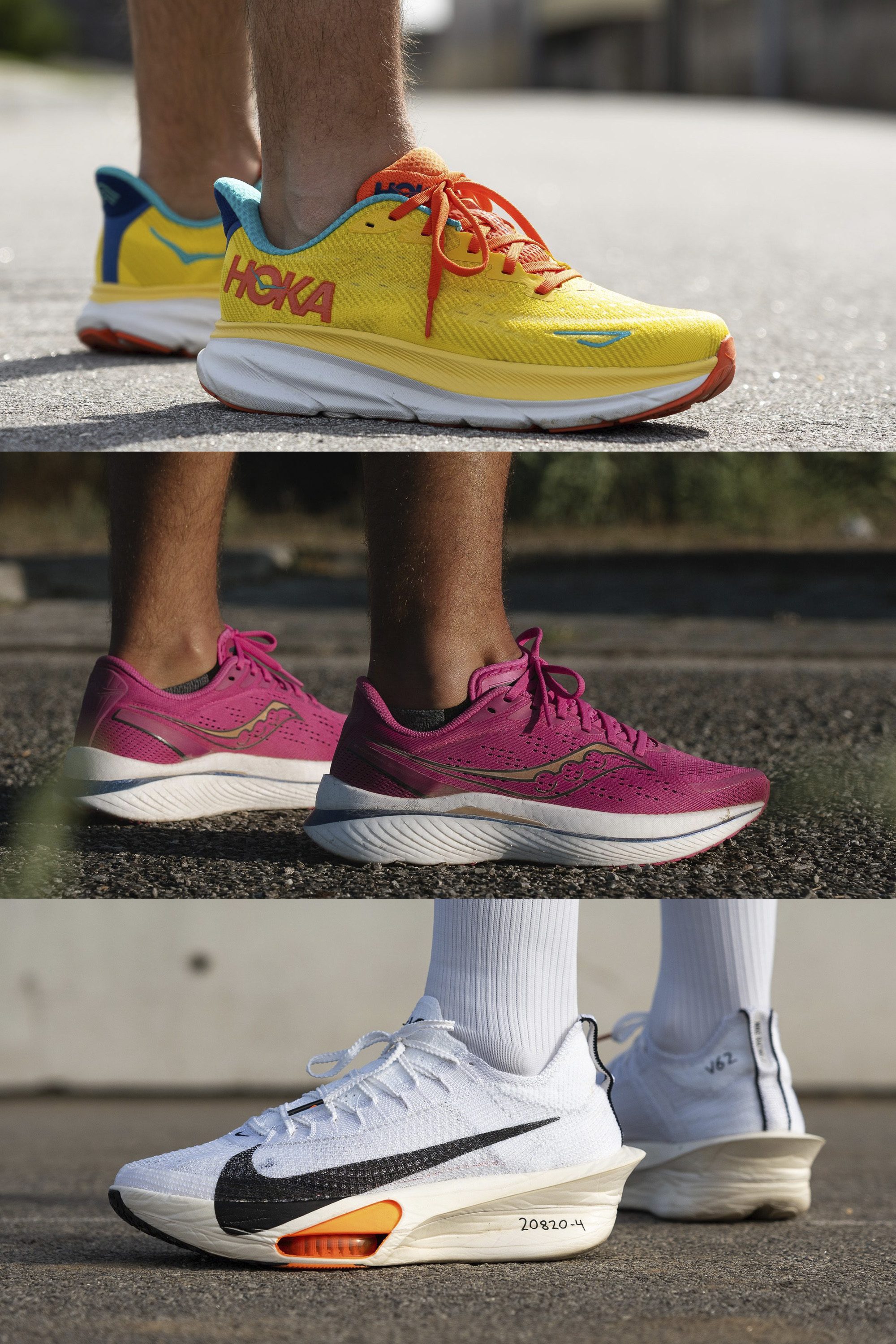
|
Daily shoes |
Tempo shoes |
Competition shoes |
|
Often heavier because they feature more cushioning for the legs to be comfy |
Mid-weight |
Lightweight to featherweight because every gramme matters |
|
Can be very flexible to create that natural feeling when running |
Usually stiff and propulsive |
When plated (carbon fibre), very stiff. Very propulsive |
|
Often very padded, featuring a thick tongue and a lot of padding in the heel |
Feature less padding |
Often, the upper is sock-like with no extra padding in the heel collar or tongue |
|
Can be very warm |
Usually breathable |
Usually very breathable |
Ground feel: yay or nay?
If you prefer the ground feel, you should look for neutral shoes with a low stack height. However, if you’re a heavy runner, if you heel strike, or if you log big mileages, you might want to look for cushioned shoes.
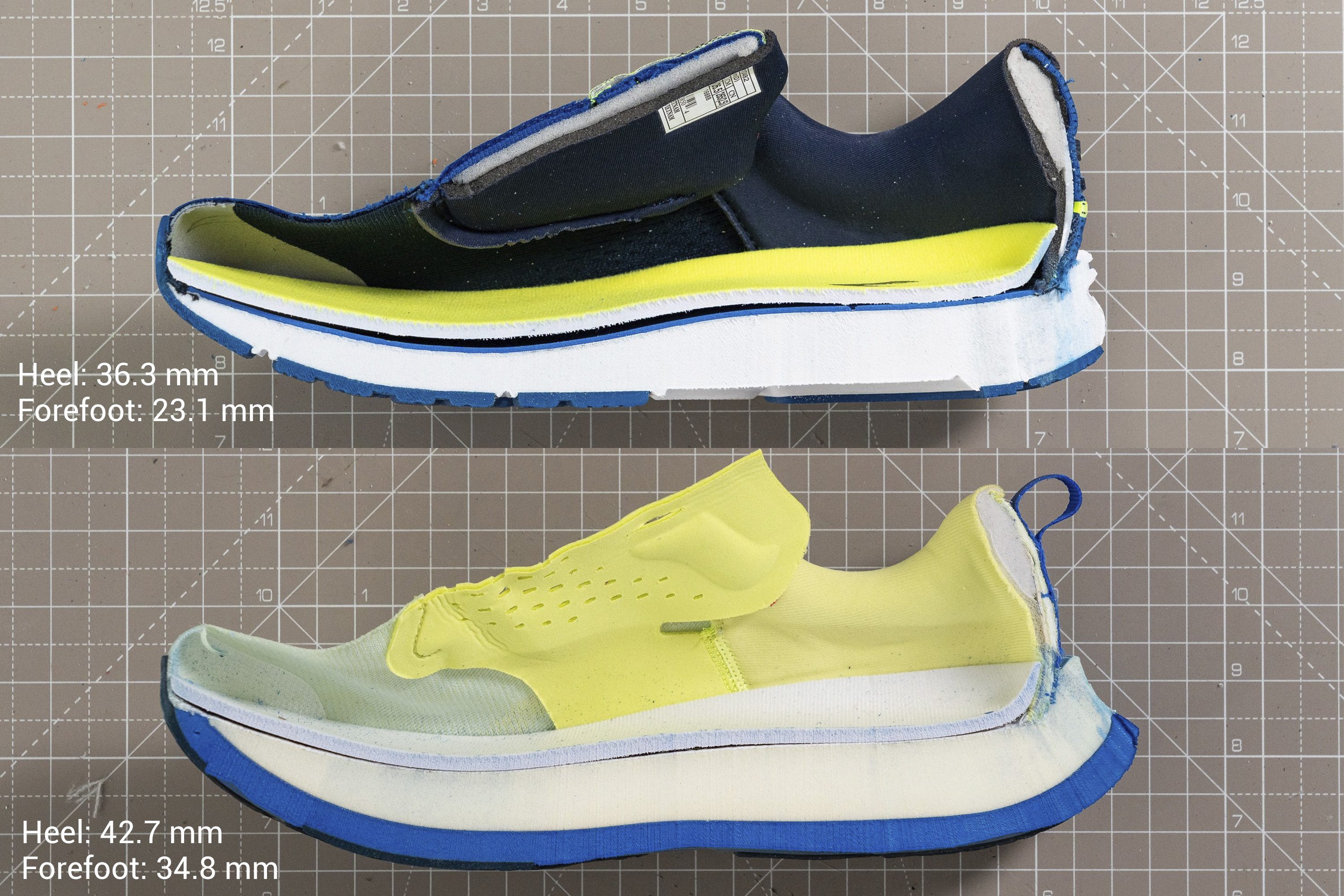
For context, here’s how high of the ground are best-rated neutral running shoes:
In our shoe lab, we measure the stack heights according to the WorldAtlhetics guidelines.
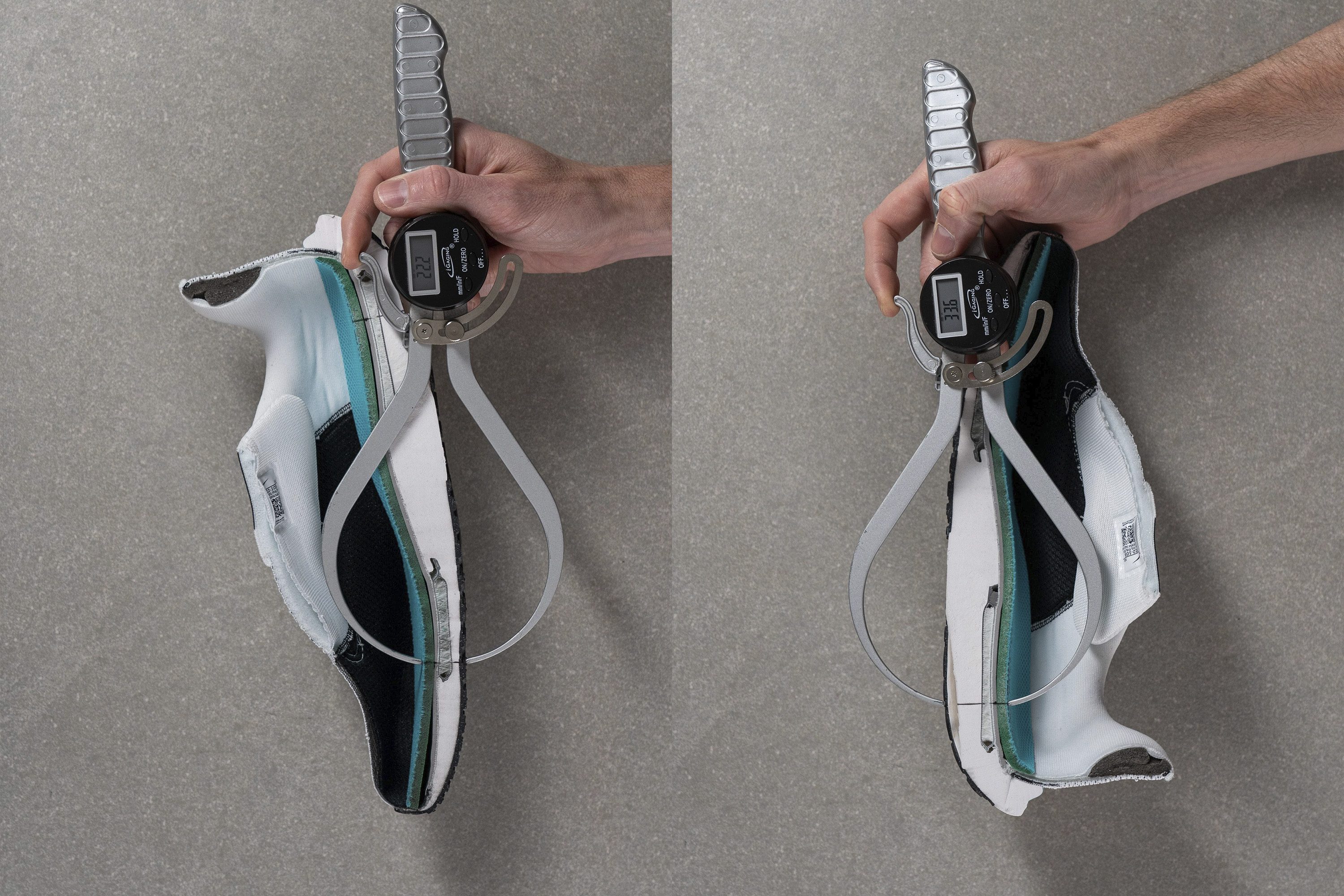
Based on these measurements, it’s easy to look for the average cushioning, minimal or maximal.
If you, however, prefer high-stack running shoes, keep in mind that those above 40mm at the heel are illegal at official competitions.
Why you must pay attention to the heel drop
Heel drop is the difference in height between the heel and the forefoot. It goes from zero to 14-15cm. Beginners are usually advised to go for ~10mm drop.
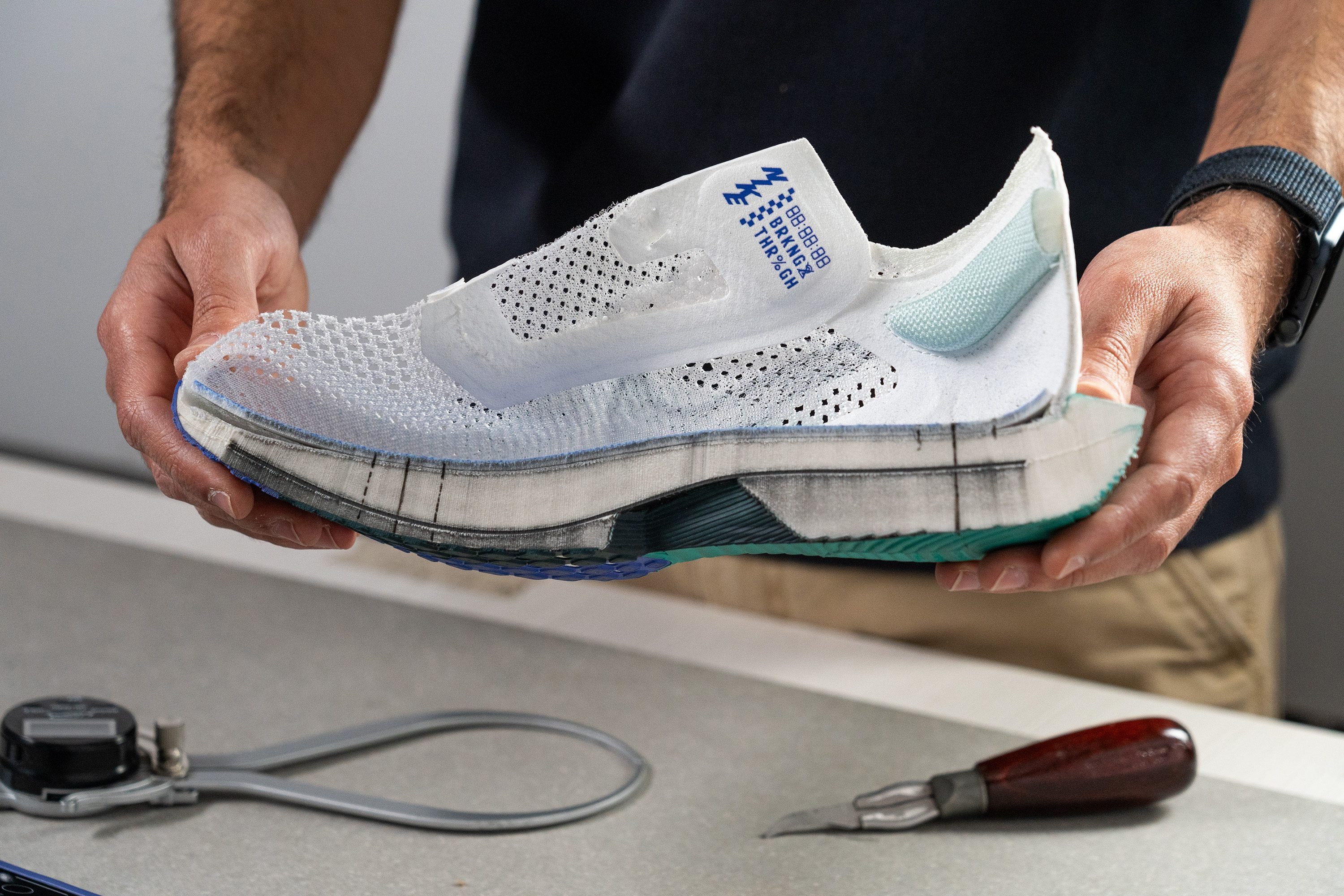
However, it’s best to first understand what heel drop does to your legs. We’ve covered this topic at great length in our ultimate guide on heel drop, so we’ll just summarise it here.
- Zero drop shoes (forefoot and heel lay at the same level) are often found in barefoot and minimalist shoes and they utilise the foot muscles the most. We never ever recommend getting zero drop shoes all of a sudden. Slow transition is a must.
- Low drop shoes (up to 4mm drop) use lower-leg muscles more and those who had Achilles or ankles injuries might find them too uncomfortable.
- Mid-drop shoes (5-8mm drop) are most often found in trail shoes and, in road shoes, are a good alternative or addition to the high-drop shoes for most runners.
- High-drop shoes (heel drop is 9mm or higher) will utilise your thighs and hip muscles a lot. If you’re coming from a hip injury (like a torn iliopsoas), you might want to avoid these and go for a lower drop.
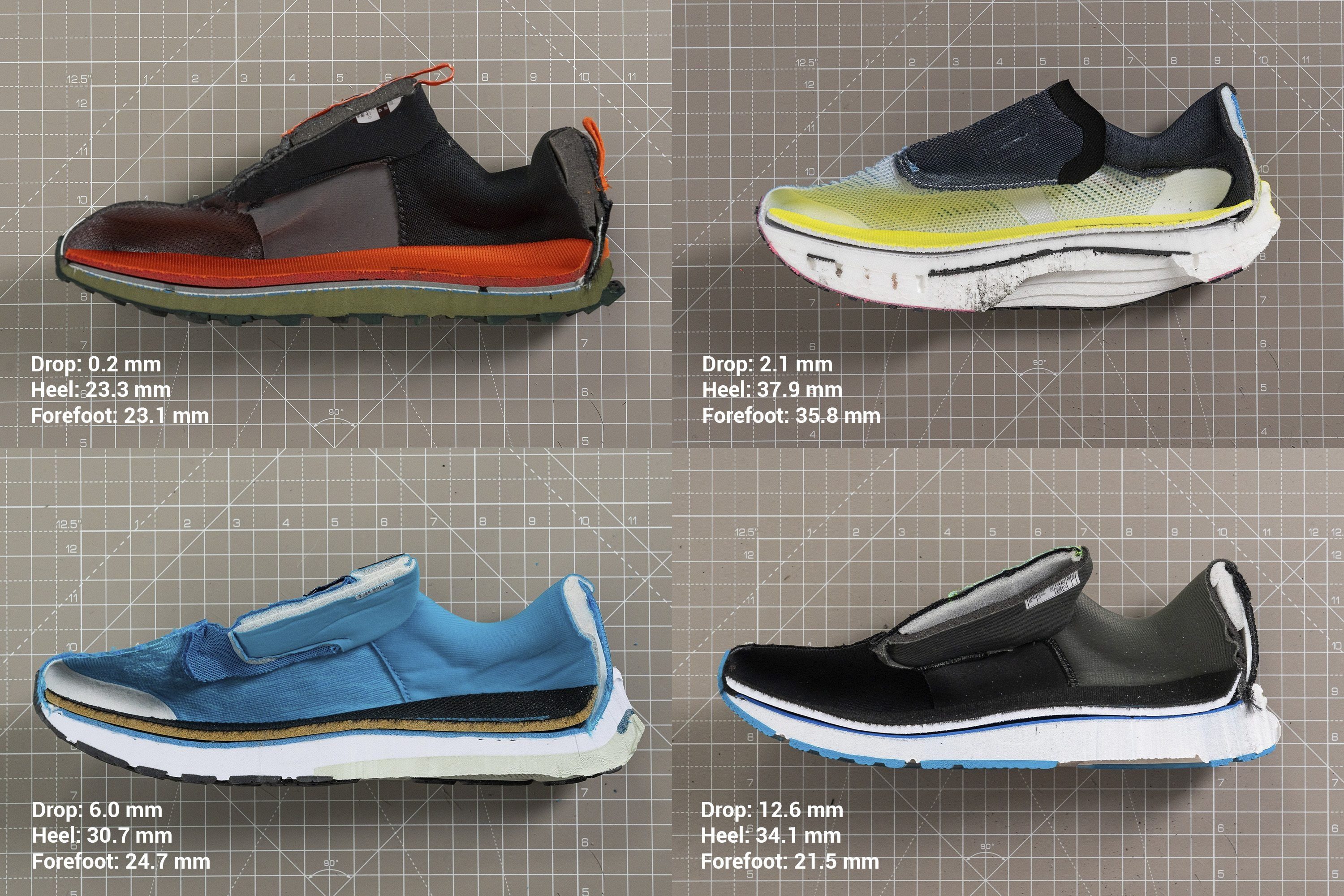
For context, here are the heel drops of the best-rated neutral running shoes. You can always use a heel drop filter on our catalogue pages to look for shoes with a certain heel drop.
Shock absorption and energy return of neutral running shoes
Knowing the stack height and the softness of the midsole does not tell us what the ride is like. We have shock absorption and energy return to do that! Shock absoprtion tells us how protective the midsole is or how good it is at dampening the impact every time we hit the ground. On the other hand, we also need to know how good the foam is at bouncing back or how much of the energy is returned, given that a part of it is lost as heat and deformation.
So, we're basically learning how kind the foam is to our legs: how much stress it will (not) send to our legs and how lively (springy) it is! The higher these numbers the better, of course. Keep in mind though, that daily trainers may have other priorities, such as durability, stability, or low budget. Not every shoe needs to have sky-high energy return and shock absorption, especially not those made for beginners, runners who run very short distances, and who are lightweight.
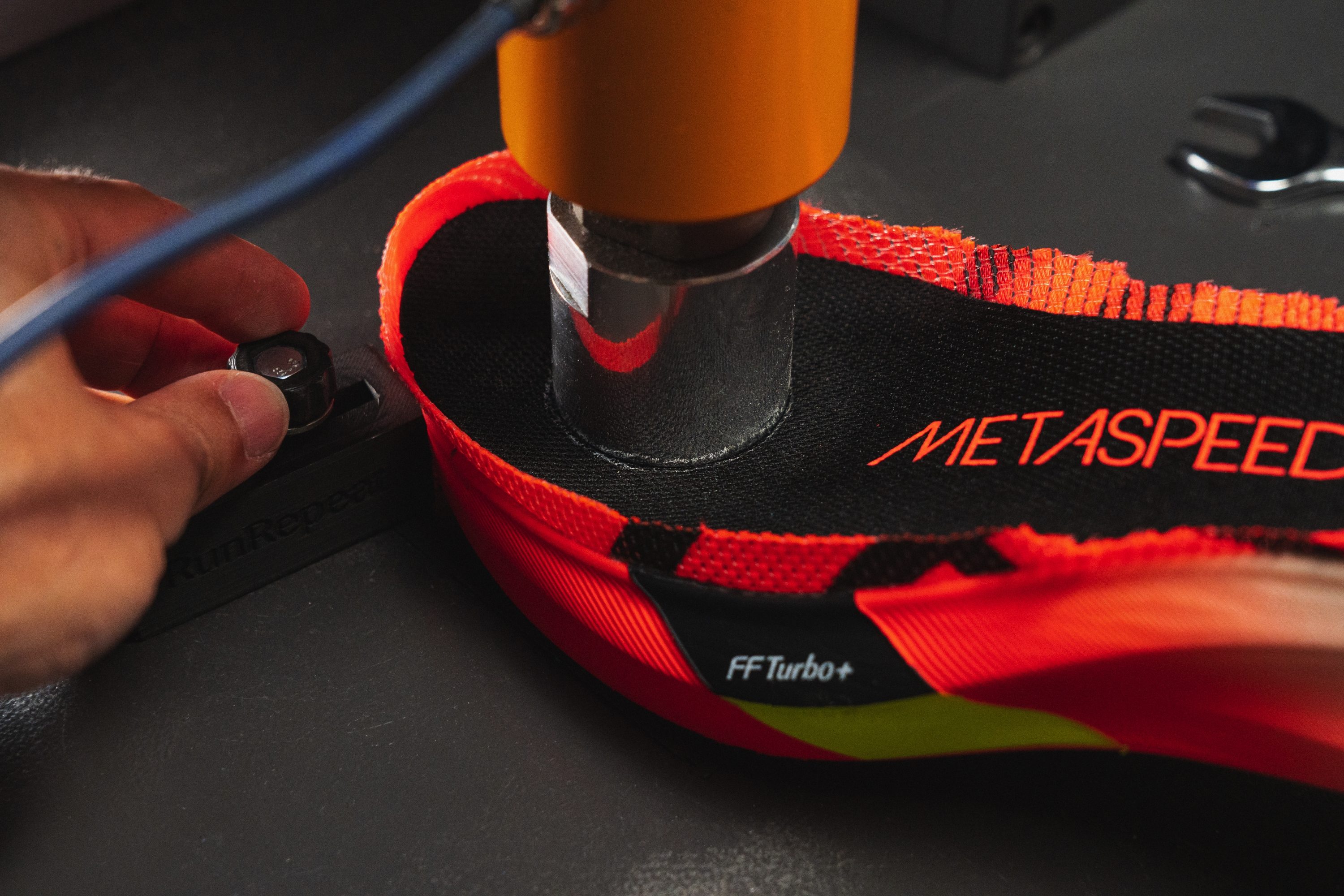
Depending on where you land (forefoot striker or heel striker), you can look at the shock absorption lab test results for that area.
Choose: from plush to very firm
In most cases, the softness of the shoe is the first thing that comes to mind when comfort is discussed. And many runners prefer softer shoes. However, there’s a point when the foam is too soft and unstable.
Testing the softness of the foam in RunRepeat lab
The best thing is, neutral shoes really offer everything, from very soft to very firm midsoles!
In our lab, we measure the softness of the foam using a shore A durometer. We cut the shoe in half (of course) and stick the needle into the midsole.

Here’s how soft (or firm) the best-rated neutral running shoes are:
If you want the softest of them, here are shoes that got by far the lowest durometer results (meaning their foams are the softest):
Keep in mind, though, that the insole can play a big role when it comes to perceived softness. Thicker softer insoles definitely feel good when you’re into that plushy feel!
For a firm ride, these will not disappoint:
How stiff are neutral running shoes?
While stability shoes tend to be stiffer, neutral running shoes do not have to aim for that. Sure, when it’s about racing and there are carbon plates involved. But, other than that, you can find daily trainers that are very flexible.
In the lab, we test the longitudinal stiffness by measuring the force needed to bend the shoe by 30 degrees. When more force is needed, it’s a stiffer shoe.
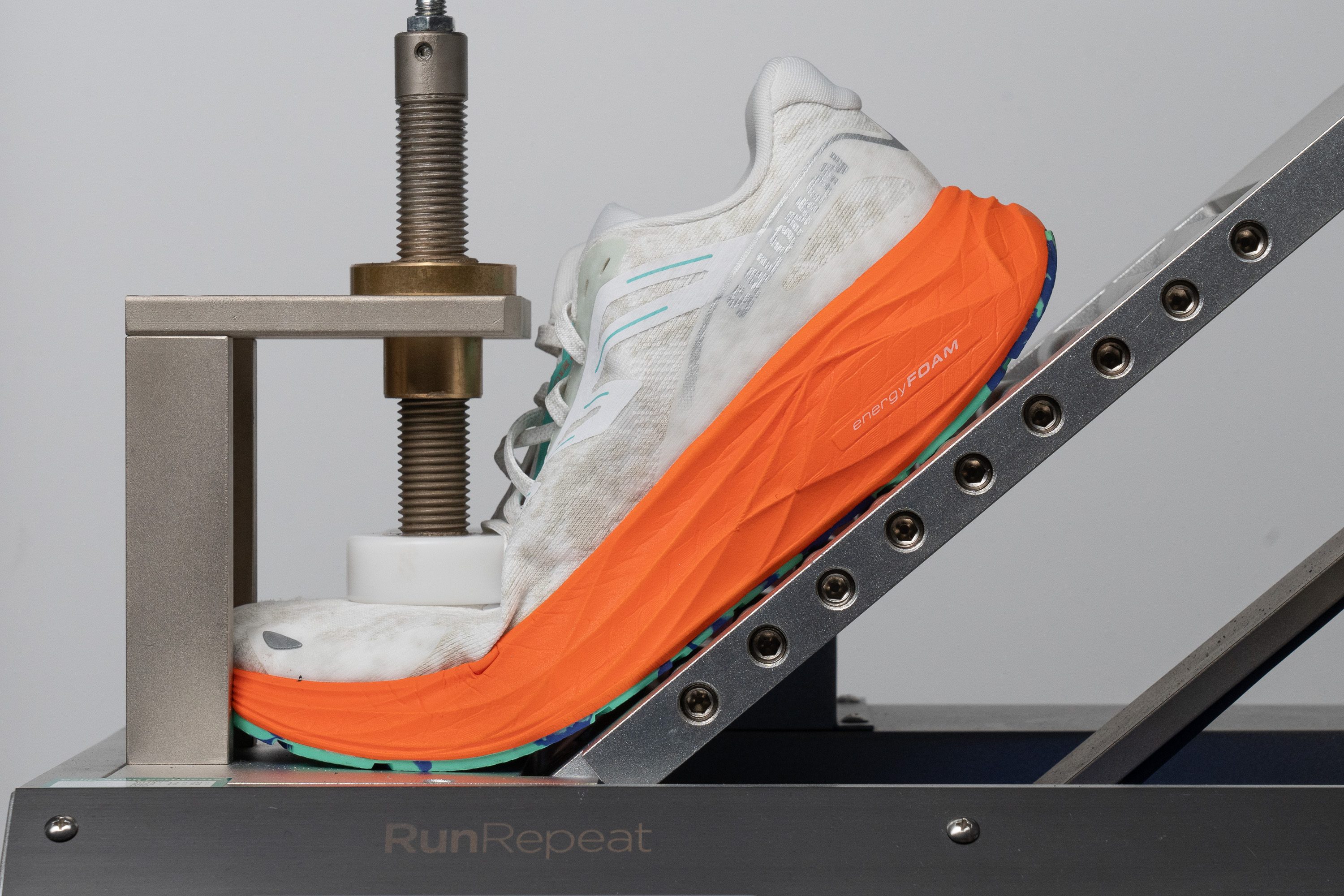
We also assess the torsional rigidity of the shoe by twisting the shoe in our hands. 1/5 rating is for the most flexible and 5/5 for the most rigid.
With that in mind, here’s how flexible the best-rated neutral shoes are:
If you want the most flexible running shoes, here are the top contenders:
Durability of neutral running shoes
Here’s what we analyse when it comes to durability:
- Toebox durability. We test this in case there are obstacles that could rip your upper or in case your big toe or pinky toe like to “escape” and punch a hole in the upper.
- Heel padding durability. Many runners don’t use a shoehorn when putting the shoes on and, if the heel slips even a little bit, or has some protrusions, the damage on the inside of the heel is guaranteed.
- Outsole durability. When runners assess the durability of a shoe, they often think about the outsole's durability. How long until there’s no outsole? Until lugs disappear?
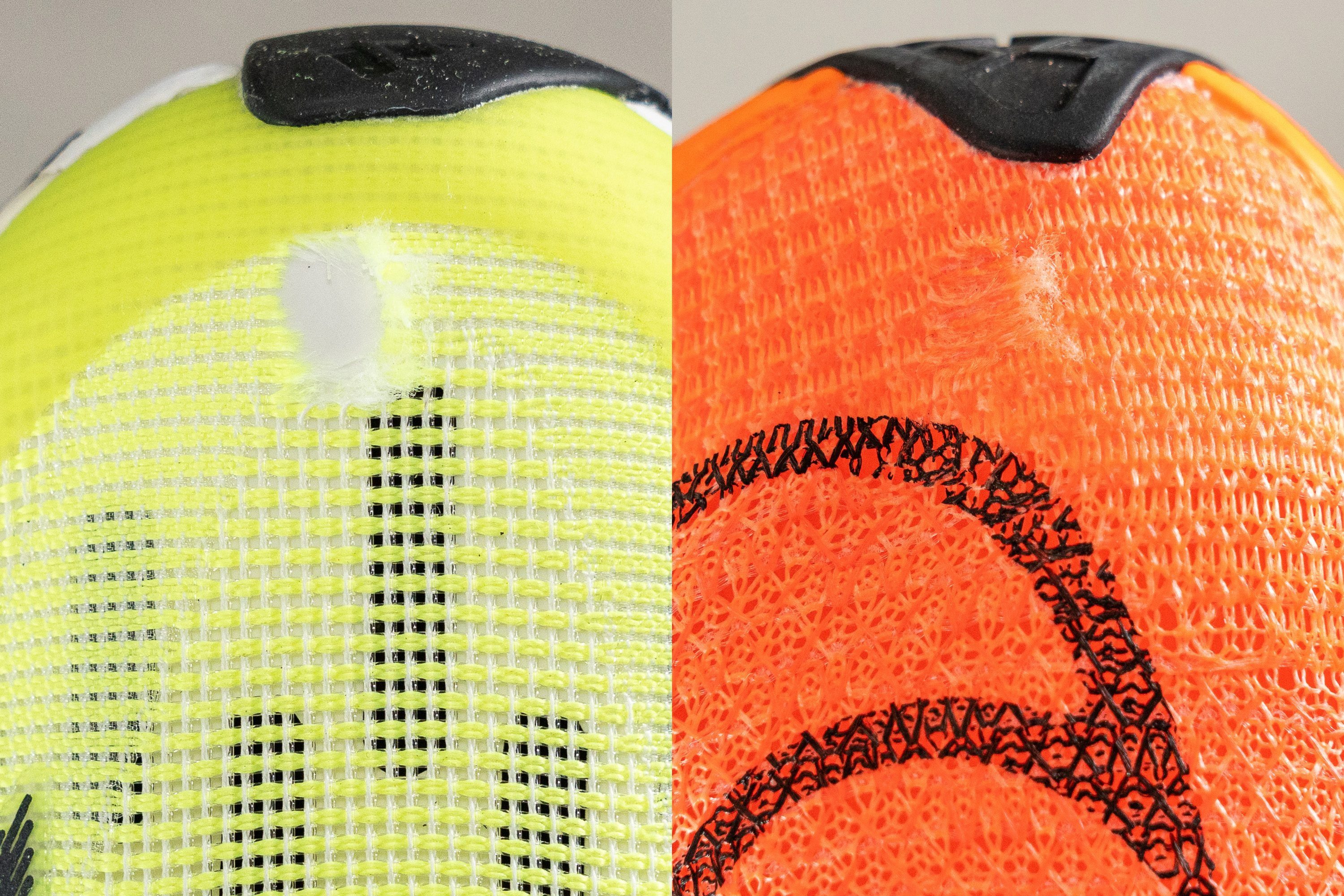
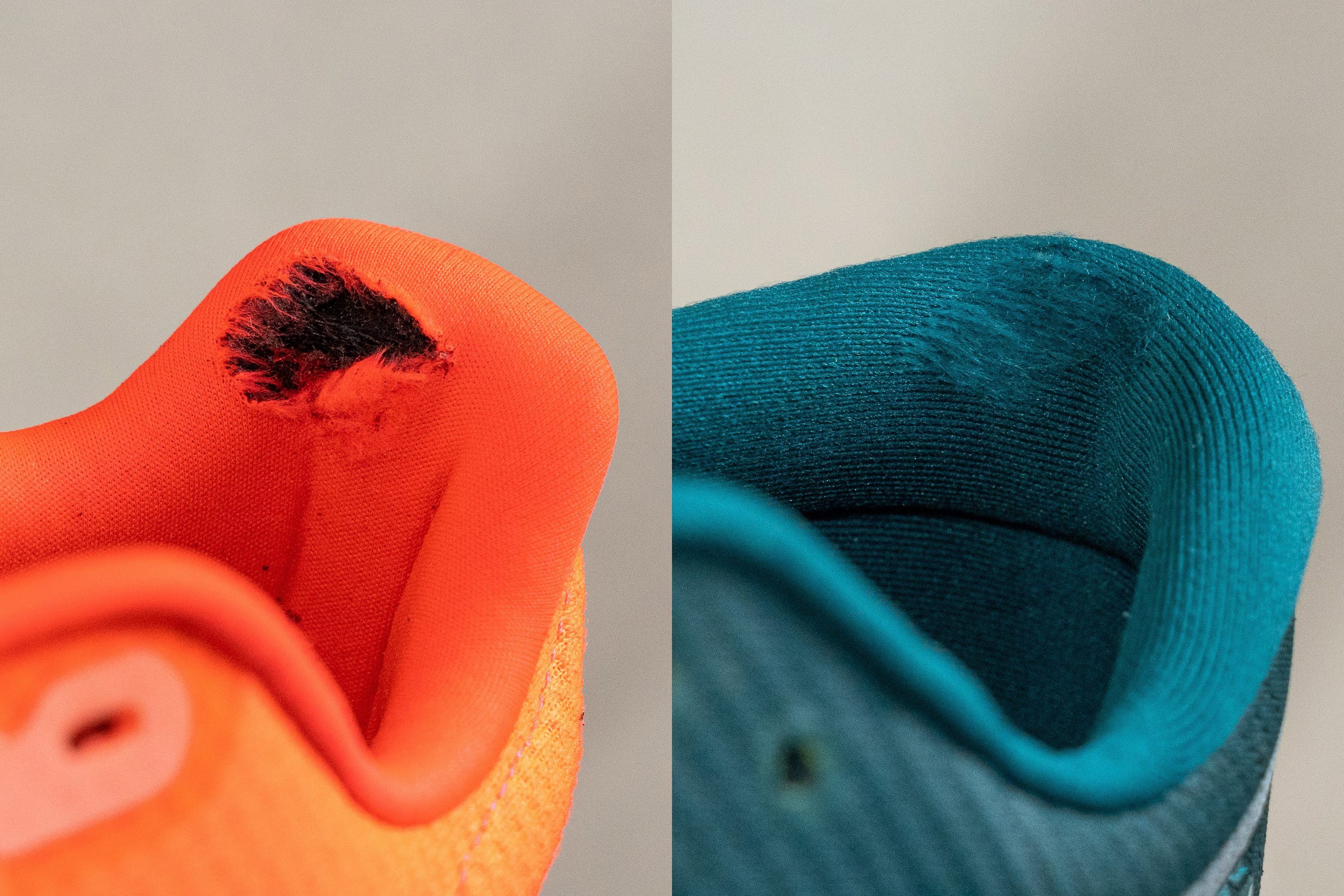
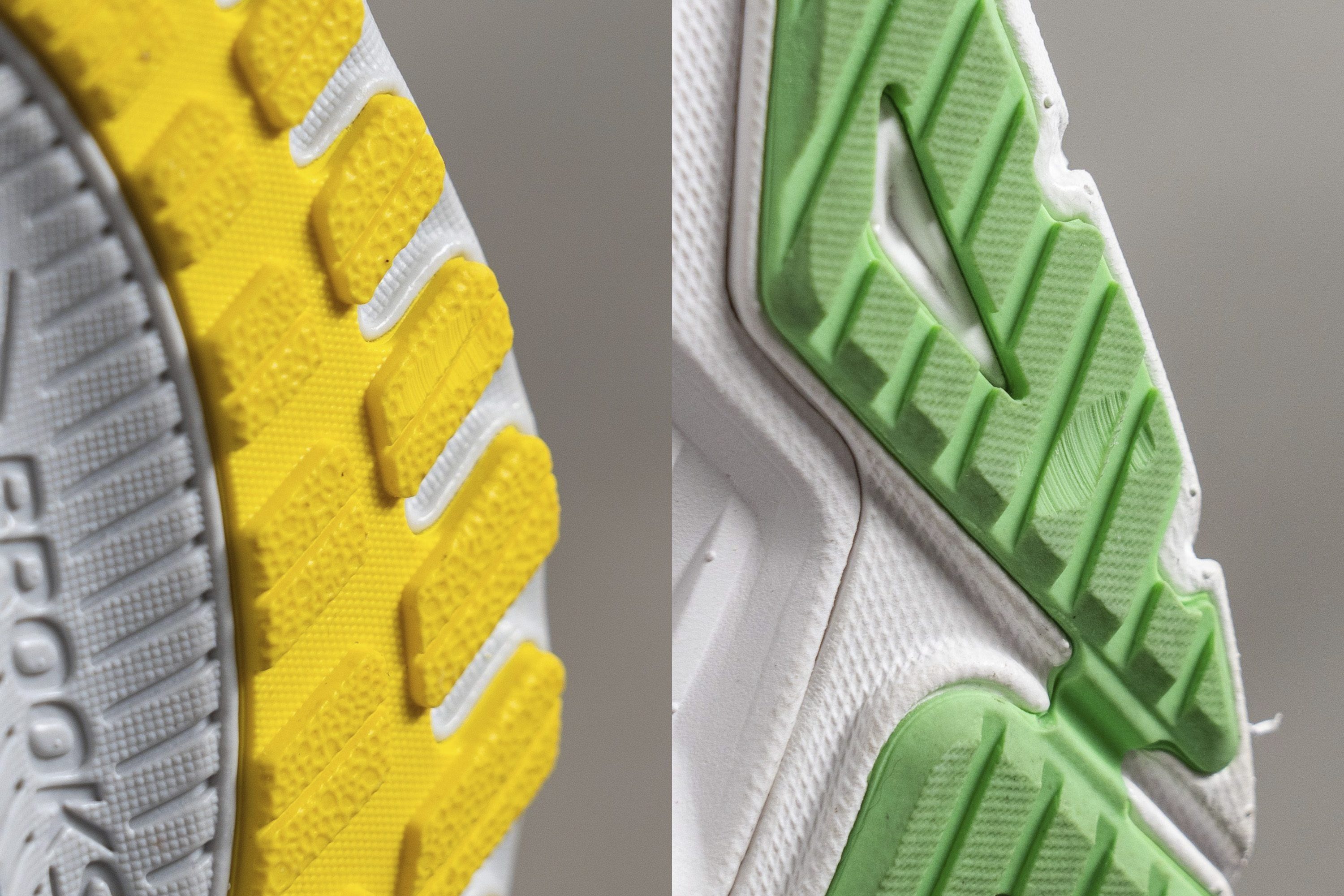
If durability is one of your concerns, we advise checking all the durability lab sections in the review of shoes you’re taking into account. You can also put them all in a comparison table to get a quick comprehensive overview.
Finding lightweight neutral running shoes
As discussed in our guide on running shoe weight, an extra 100g in running shoes can make you 1% slower. So, runners tend to go for lighter running shoes. And the good news is that neutral running shoes do not feature stability technologies that could make them heavier.
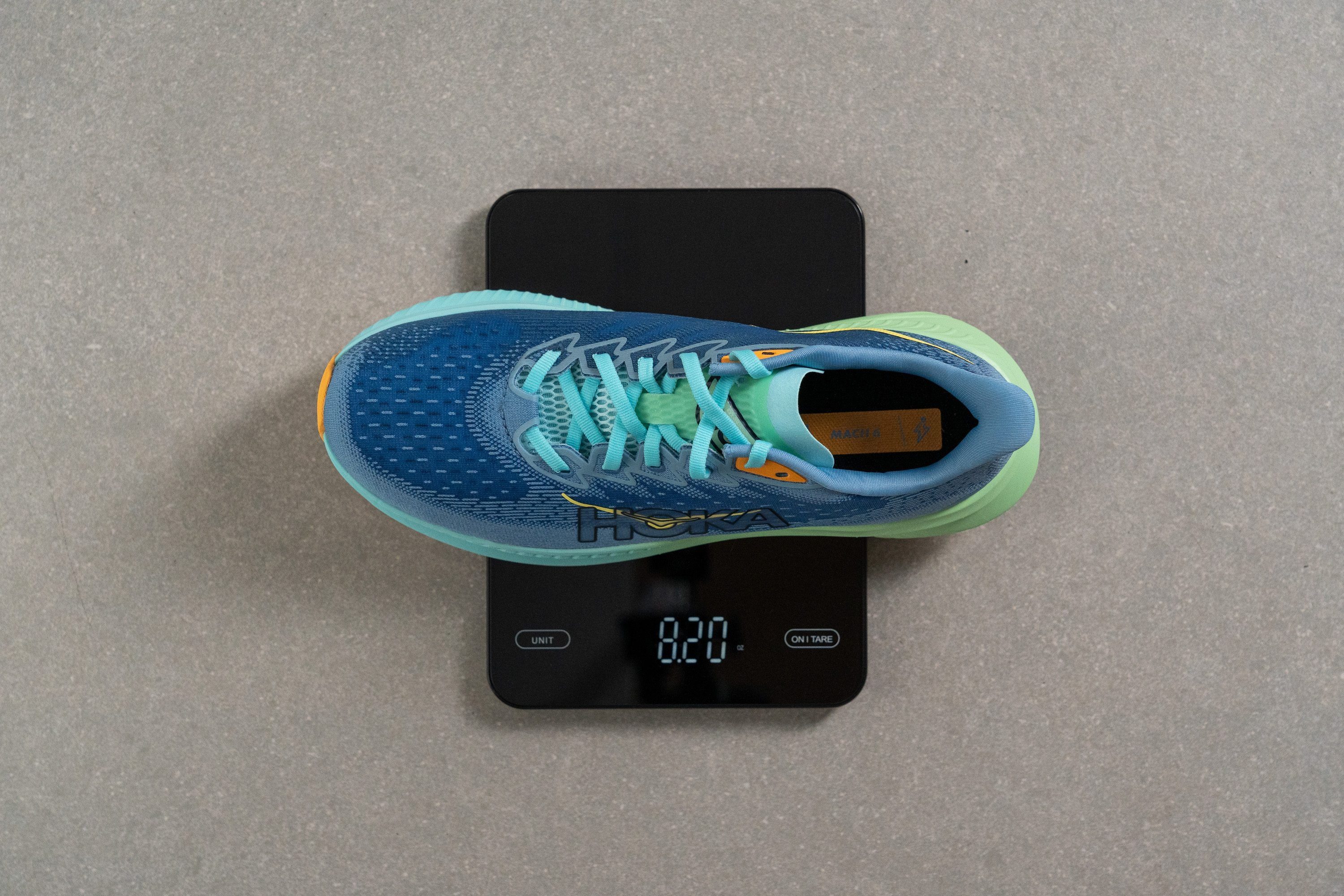
Here are the weights of best-rated neutral running shoes:
And, in case you want the shoes to be featherlight, here are the shoes from the top of the list:
Confirm that you need neutral shoes
Best to visit a specialist, like a podiatrist, ideally one that specialises in running. We share a DIY test below but keep in mind, when it comes to accuracy, they can not be compared to the tests that professionals do.
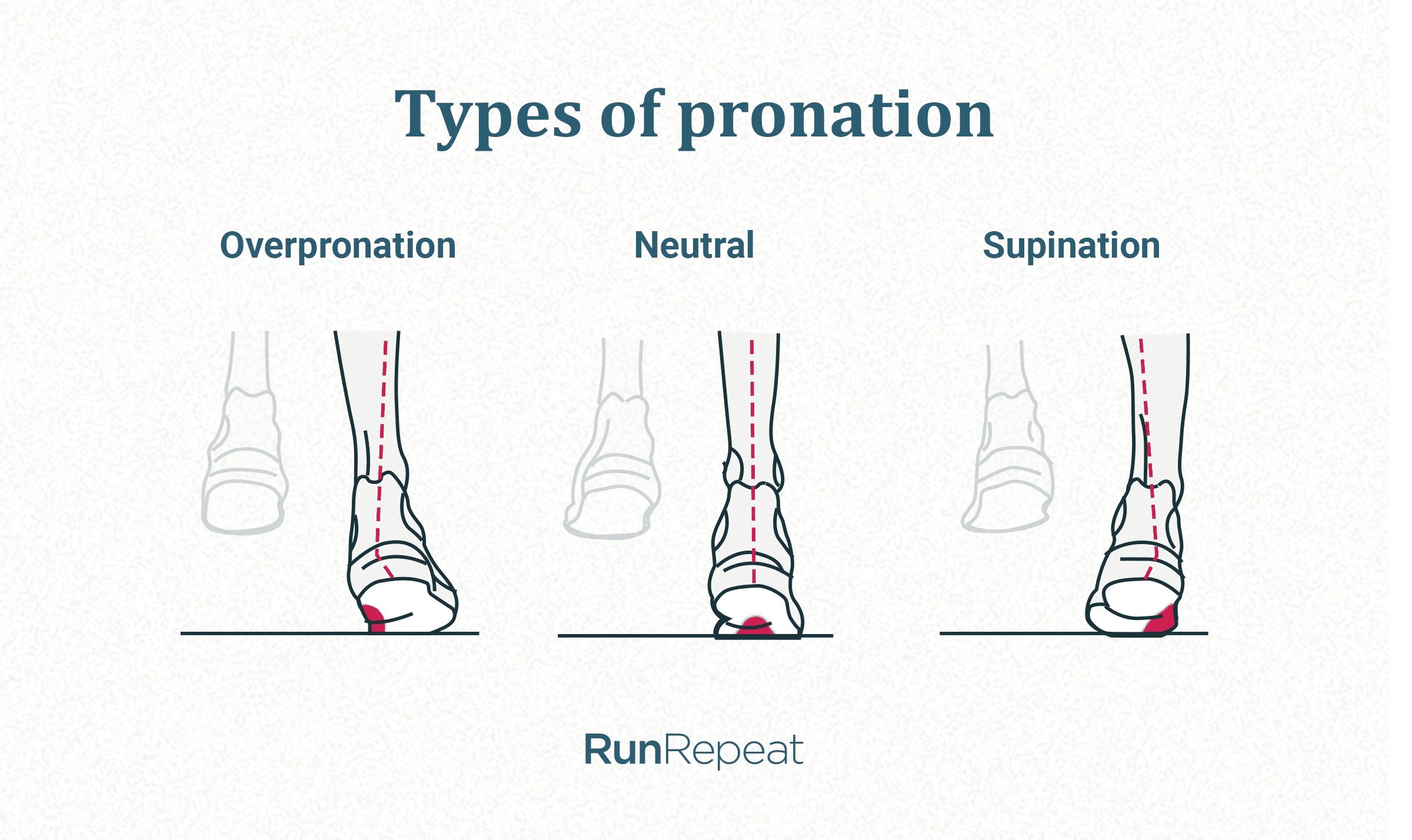
Having a neutral pronation and, therefore, needing neutral shoes, means you land on the surface evenly, and your ankles do not roll excessively inward or outward. This also means that the wear on the bottom of your shoes is distributed evenly between the ball of the foot and the heel.
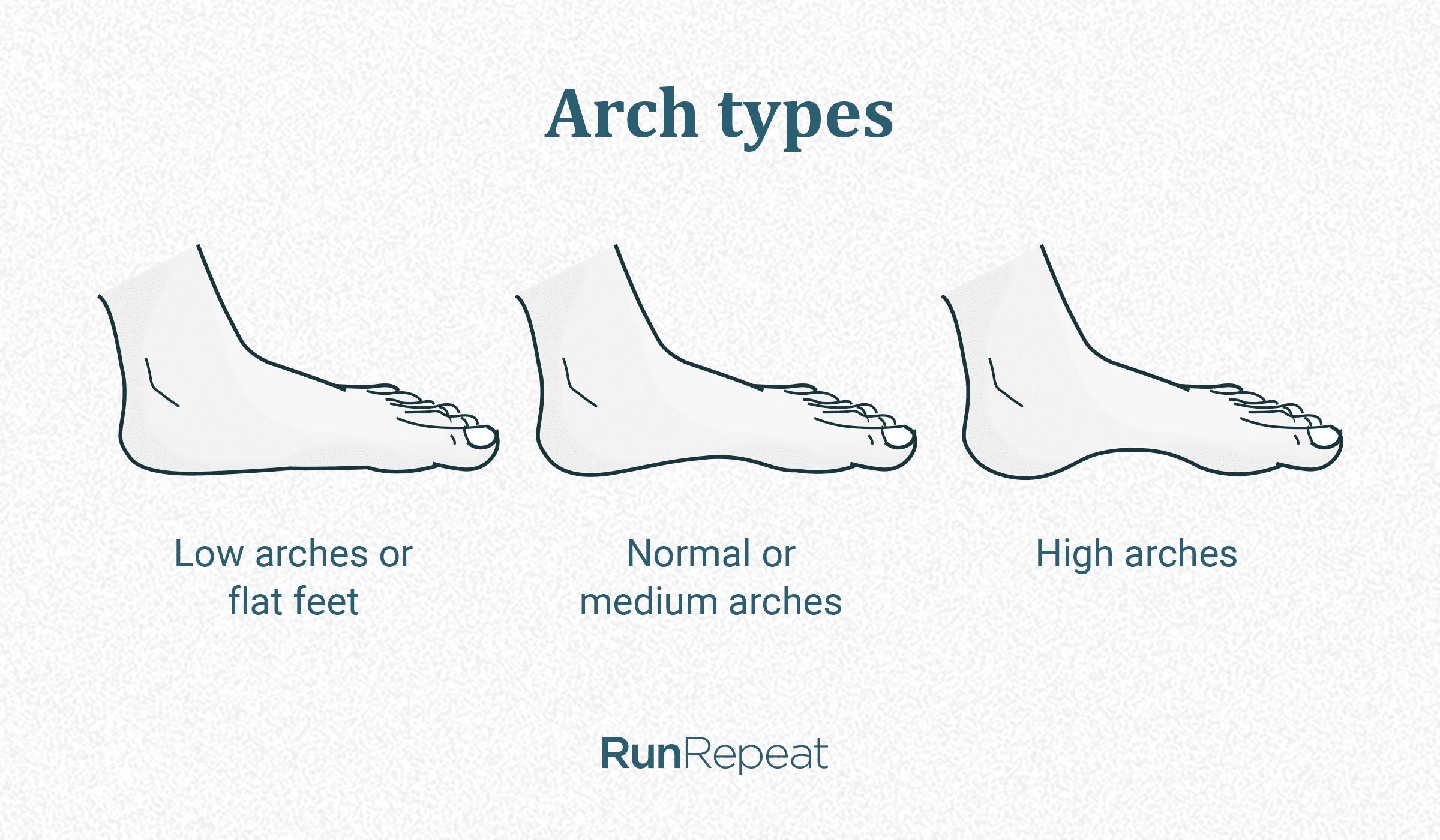
Runners with neutral pronation usually have medium arches. If you want to perform a DIY test at home for arch height, here’s how to do it:

Look at the results and compare them to these rough sketches:
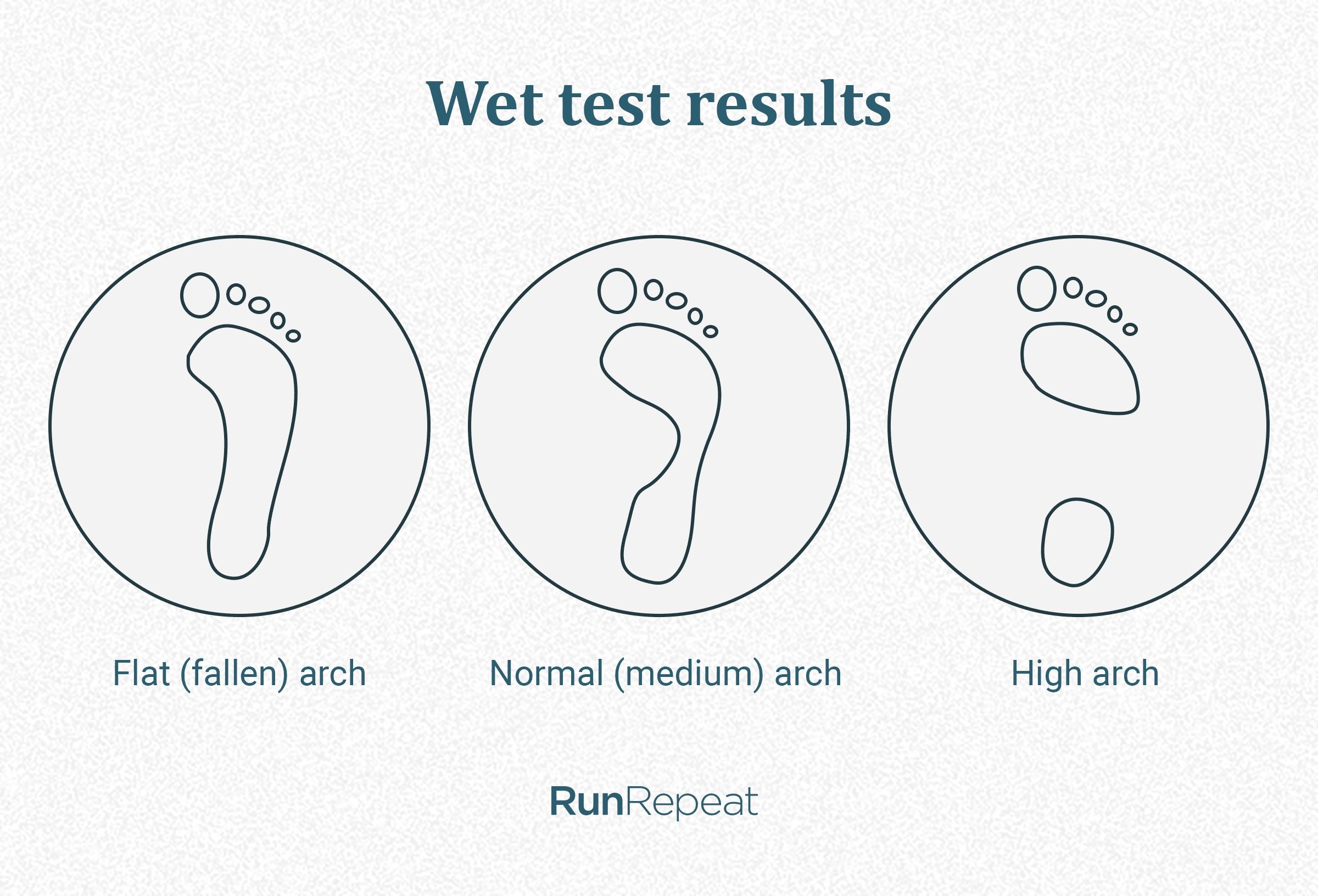
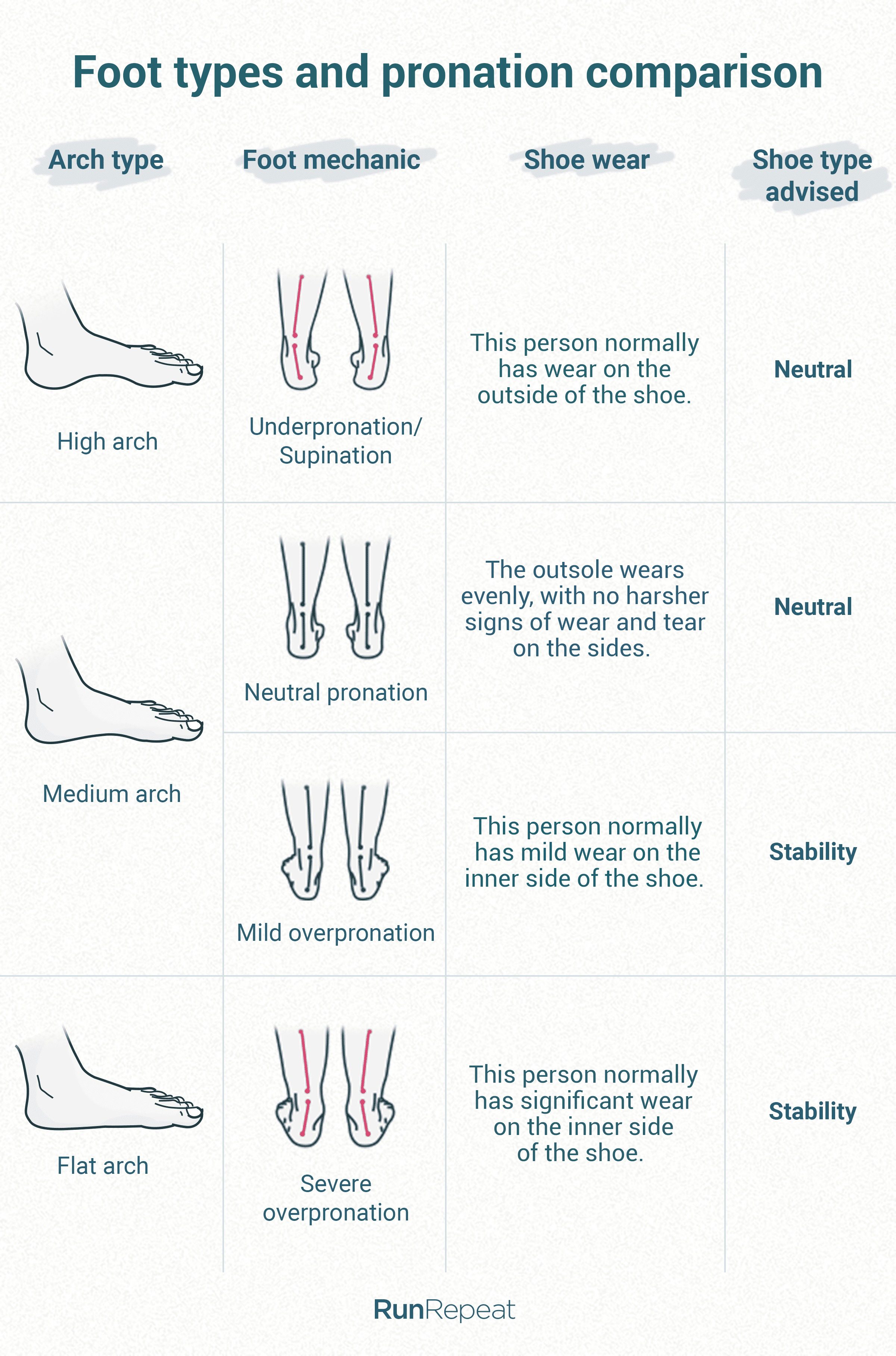
If you’ve concluded that you do not have neutral pronation, we recommend:
- Reading our guide on best overpronation shoes, in case you discovered you are overpronating
- Checking out our guide on best supination shoes, if you found out you are supinating.

